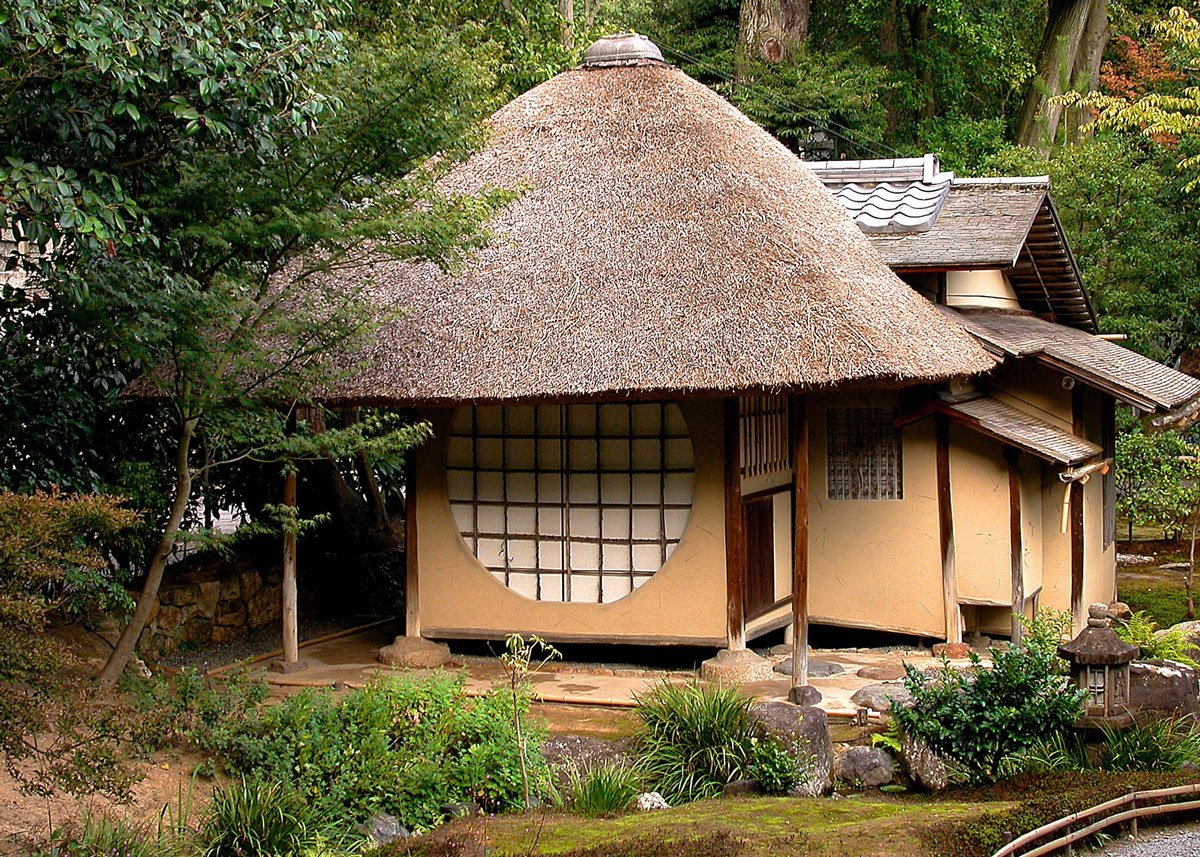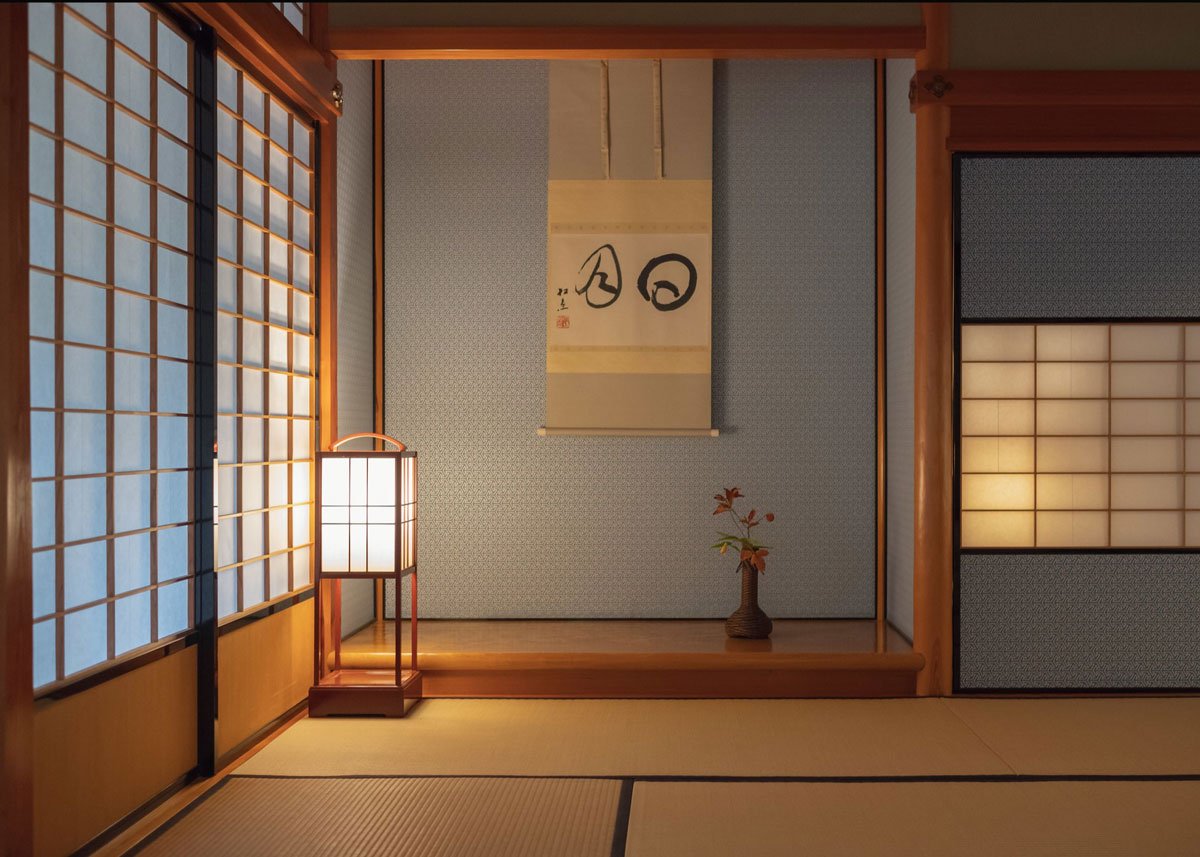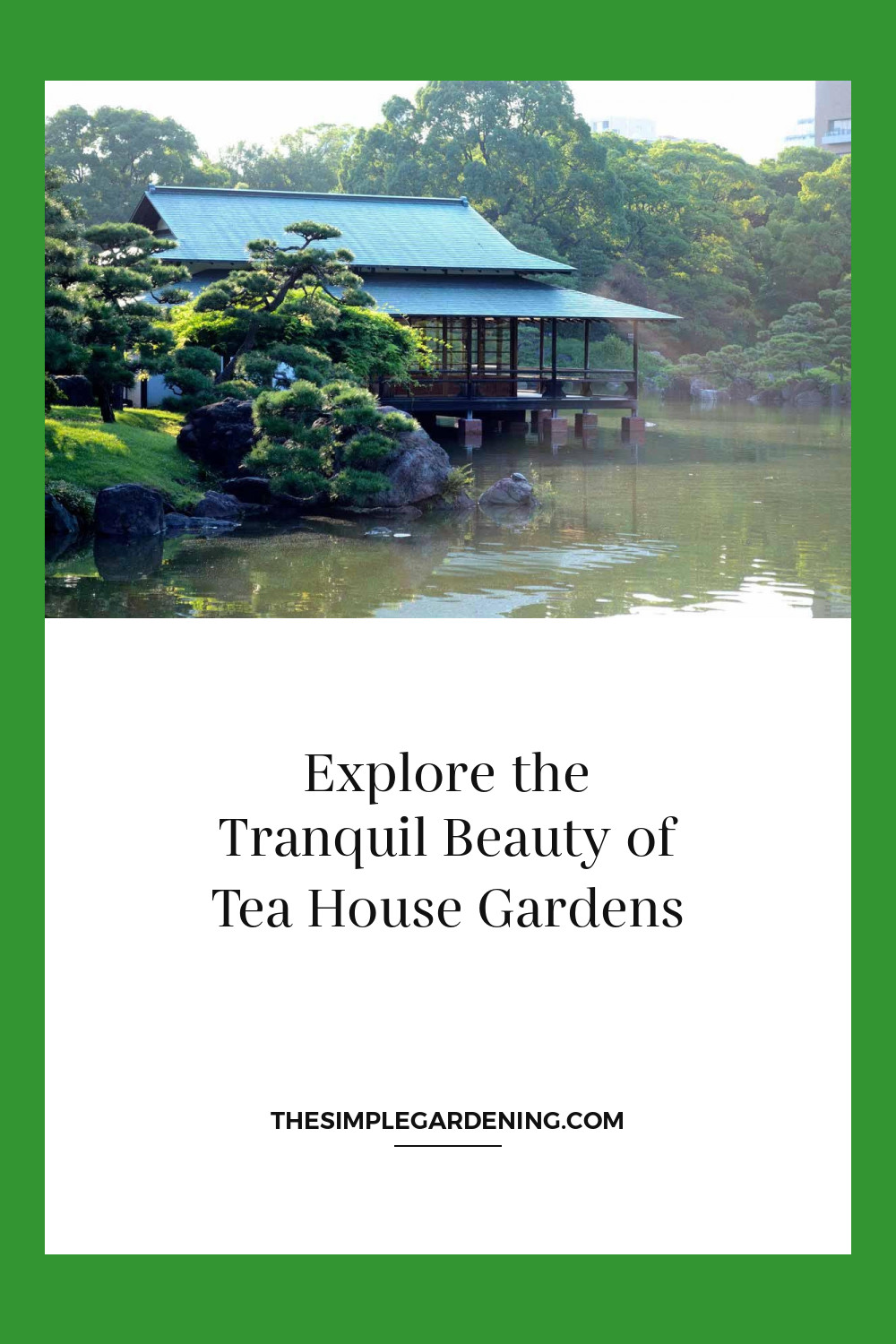Japanese tea house gardens, known as Chashitsu-niwa, are serene outdoor spaces designed to complement traditional tea houses. These gardens are meticulously crafted to offer tranquility and enhance the tea ceremony experience, blending nature and human artistry harmoniously.
Table 1: Key Features of Japanese Tea House Gardens
| Feature | Description |
|---|---|
| Tea House (Chashitsu) | A small, simple structure for performing tea ceremonies |
| Pathways | Winding paths leading guests to the tea house |
| Water Features | Streams, ponds, and waterfalls adding serenity |
| Plant Selection | Native plants, including moss, ferns, and shrubs |
| Stone Elements | Stepping stones, lanterns, and rock arrangements |
Historical and Cultural Significance
The tradition of tea house gardens dates back to the 16th century, closely linked with the tea ceremony (Chado). These gardens reflect the Zen principles of simplicity, austerity, and a deep connection with nature, serving as a retreat for contemplation and relaxation.
Principles of Design in Tea House Gardens
Harmony, Simplicity, and Balance
Tea house gardens are designed with an emphasis on harmony, simplicity, and balance. Each element is thoughtfully placed to create a cohesive and calming environment.
Table 2: Design Principles in Tea House Gardens
| Principle | Explanation |
|---|---|
| Harmony | Blending natural and man-made elements seamlessly |
| Simplicity | Using minimalistic designs to create a peaceful atmosphere |
| Balance | Achieving equilibrium between different garden elements |
Point List: Elements Contributing to Garden Harmony
- Use of natural materials like wood and stone
- Integration of asymmetrical designs
- Thoughtful placement of plants and stones
Incorporating Natural Elements and Symbolism
Natural elements in tea house gardens carry deep symbolic meanings. Water represents purity, rocks symbolize permanence, and plants reflect the changing seasons.
Table 3: Symbolism of Natural Elements
| Element | Symbolism |
|---|---|
| Water | Purity, life, and continuous flow |
| Rocks | Stability, endurance, and timelessness |
| Plants | Seasons, growth, and natural beauty |

Source Image: japanobjects.com
Layout and Structure of Tea House Gardens
Arrangement of Paths, Ponds, and Tea Houses
The layout of tea house gardens includes winding paths, strategically placed ponds, and the tea house itself. These elements are arranged to lead visitors on a journey of tranquility.
Table 4: Garden Layout Components
| Component | Description |
|---|---|
| Paths | Curved paths guiding visitors through the garden |
| Ponds | Small bodies of water reflecting the sky and surroundings |
| Tea House | Central structure for tea ceremonies |
Creating Intimate and Contemplative Spaces
The garden’s layout is designed to create intimate spaces that encourage reflection and mindfulness. Small, secluded areas provide spots for quiet contemplation.
Point List: Creating Intimate Spaces
- Use of low hedges and bamboo screens
- Placement of benches and resting spots
- Strategic planting to create private nooks
IV. Tea House Architecture and Design
Traditional Features of Japanese Tea Houses
Japanese tea houses are characterized by their simplicity and functionality. Common features include shoji screens, tatami mats, and a tokonoma (alcove for displaying art).
Table 5: Traditional Tea House Features
| Feature | Description |
|---|---|
| Shoji Screens | Sliding paper doors allowing natural light |
| Tatami Mats | Straw mats used for flooring |
| Tokonoma | Decorative alcove for art and flower arrangements |
Materials Used and Architectural Styles
Traditional materials like wood, bamboo, and paper are used in tea house construction. The architectural style is minimalist, emphasizing natural beauty and simplicity.
Point List: Common Materials
- Wood: Cedar and pine for structure
- Bamboo: Used in fencing and screens
- Paper: Rice paper for shoji screens

Source Image: www.thegardenofzen.com
Elements of Nature in Tea House Gardens
Use of Plants, Stones, and Water Features
Plants, stones, and water features are integral to tea house gardens. They are chosen and placed to enhance the garden’s aesthetic and spiritual qualities.
Table 6: Natural Elements in Tea House Gardens
| Element | Description |
|---|---|
| Plants | Native species like moss, ferns, and evergreens |
| Stones | Carefully selected rocks for pathways and arrangements |
| Water Features | Streams, ponds, and waterfalls for auditory and visual appeal |
Symbolism of Natural Elements in Japanese Culture
Each natural element in a tea house garden holds significant meaning. Understanding this symbolism adds depth to the garden’s design.
Point List: Symbolic Meanings
- Water: Represents life’s journey and purity
- Stones: Signify strength and permanence
- Plants: Reflect the cycle of life and the beauty of nature
Seasonal Variations in Tea House Gardens
Cherry Blossoms in Spring
Spring in a tea house garden is marked by the blooming of cherry blossoms, symbolizing renewal and the fleeting nature of life.
Table 7: Spring Features
| Feature | Description |
|---|---|
| Cherry Blossoms | Pink and white blooms creating a delicate ambiance |
| Fresh Greenery | New growth symbolizing rejuvenation |
| Seasonal Flowers | Varieties like azaleas and camellias adding color |
Fall Foliage and Maple Trees
Autumn brings vibrant colors to the tea house garden, with maple trees displaying brilliant red and orange leaves.
Point List: Fall Highlights
- Maple Trees: Stunning autumn foliage
- Chrysanthemums: Traditional fall flowers
- Falling Leaves: Creating a picturesque and contemplative scene

Source Image: www.alamy.com
Tea House Gardens as Meditation Spaces
Creating Tranquil Environments for Contemplation and Reflection
Tea house gardens are designed to be tranquil spaces that promote meditation and mindfulness. The serene environment helps clear the mind and focus on the present moment.
Table 8: Features for Meditation
| Feature | Description |
|---|---|
| Quiet Corners | Secluded spots for solitude and reflection |
| Water Sounds | Gentle water features providing calming background noise |
| Minimalist Design | Simple, uncluttered spaces to avoid distractions |
Incorporating Zen Principles in Garden Design
Zen principles such as simplicity, naturalness, and mindfulness are fundamental in the design of tea house gardens.
Point List: Zen Design Principles
- Simplicity: Avoiding unnecessary elements
- Naturalness: Using natural materials and forms
- Mindfulness: Designing spaces that encourage present-moment awareness
Tea Ceremony and Tea House Gardens
Role of Tea Houses in Japanese Tea Ceremony (Chado)
The tea house garden plays a vital role in the tea ceremony, providing a peaceful setting that enhances the ritual’s spiritual aspects.
Table 9: Tea Ceremony Elements
| Element | Description |
|---|---|
| Chaji | Full tea ceremony involving a meal and tea |
| Chakai | Shorter tea gathering focused on tea and sweets |
| Garden Approach | Path leading to the tea house, symbolizing purification |
Relationship Between Garden Design and Tea Ceremony Rituals
The garden’s design reflects the principles of the tea ceremony, emphasizing harmony, respect, purity, and tranquility.
Point List: Garden and Tea Ceremony Connection
- Purification: The garden path represents cleansing before entering the tea house
- Harmony: Garden elements are arranged to create a harmonious environment
- Tranquility: The serene garden setting enhances the meditative quality of the ceremony

Source Image: www.alamy.com
Tea House Gardens (Chashitsu-niwa)
Zen Influence in Tea House Garden Design
Zen Buddhism Principles of Simplicity and Mindfulness
Zen Buddhism heavily influences tea house garden design, with an emphasis on simplicity, naturalness, and mindfulness.
Table 10: Zen Design Influences
| Influence | Description |
|---|---|
| Simplicity | Minimalistic designs to foster peace and clarity |
| Naturalness | Use of organic materials and natural forms |
| Mindfulness | Creating spaces that encourage present-moment awareness |
Raked Gravel (Karesansui) and Moss Gardens (Tsubo-niwa)
Raked gravel and moss gardens are common in tea house gardens, representing water and natural landscapes in an abstract form.
Point List: Features of Karesansui and Tsubo-niwa
- Karesansui: Dry landscape gardens with raked gravel
- Moss Gardens: Soft, green moss covering the ground
- Symbolism: Abstract representations of nature
Water Features in Tea House Gardens
Symbolism of Water in Japanese Culture
Water in tea house gardens symbolizes purity, life, and the continuous flow of nature.
Table 11: Types of Water Features
| Feature | Description |
|---|---|
| Streams | Flowing water creating a soothing sound |
| Ponds | Reflective surfaces enhancing tranquility |
| Waterfalls | Cascading water adding dynamic visual and auditory interest |
Designing Streams, Ponds, and Waterfalls
Water features are carefully designed to enhance the garden’s aesthetics and evoke a sense of calm.
Point List: Designing Water Features
- Streams: Creating natural-looking meandering paths
- Ponds: Incorporating reflective surfaces to mirror the sky and surroundings
- Waterfalls: Using rocks to create cascading effects

Source Image: japanobjects.com
Stone Arrangements and Stepping Stones
Use of Rocks and Stones for Symbolism and Aesthetics
Rocks and stones in tea house gardens are carefully chosen and placed to enhance the garden’s visual appeal and symbolic meaning.
Table 12: Stone Arrangement Types
| Arrangement | Description |
|---|---|
| Stepping Stones | Flat stones guiding visitors through the garden |
| Rock Groups | Symbolic arrangements representing mountains or islands |
| Stone Lanterns | Decorative and functional lighting elements |
Creating Tranquil Pathways with Stepping Stones
Stepping stones create a journey through the garden, encouraging mindfulness and a connection with nature.
Point List: Stepping Stone Pathways
- Placement: Evenly spaced to encourage a slow, deliberate walk
- Materials: Natural stones with varying textures
- Path Design: Winding paths that reveal new views and experiences
Pruning and Maintenance in Tea House Gardens
Techniques for Pruning Trees and Shrubs
Pruning is essential in tea house gardens to maintain the desired shape and promote healthy growth.
Table 13: Pruning Techniques
| Technique | Description |
|---|---|
| Thinning | Removing excess branches to allow light and air |
| Shaping | Trimming plants to maintain a specific form |
| Deadheading | Removing spent flowers to encourage new blooms |
Raking Gravel and Maintaining Moss Gardens
Regular maintenance ensures that tea house gardens retain their beauty and tranquility.
Point List: Maintenance Tasks
- Raking: Keeping gravel patterns clear and precise
- Moss Care: Ensuring moss remains lush and free of debris
- General Upkeep: Regular weeding, watering, and tidying

Source Image: www.pinterest.com.mx
Tea House Gardens in Modern Landscaping
Incorporating Traditional Elements in Contemporary Gardens
Modern gardens can integrate traditional tea house garden elements to create serene and beautiful spaces.
Table 14: Modern Adaptations of Tea House Gardens
| Element | Modern Adaptation |
|---|---|
| Minimalist Design | Simplified elements for smaller urban spaces |
| Water Features | Compact water features like small fountains |
| Plant Choices | Using low-maintenance native plants |
Adapting Tea House Garden Design to Urban Spaces
Even in urban environments, tea house garden principles can be applied to create pockets of tranquility.
Point List: Urban Garden Tips
- Small Spaces: Utilize compact designs and vertical elements
- Low-Maintenance: Choose hardy plants that thrive in limited conditions
- Personal Touches: Incorporate personal elements like small sculptures or favorite plants
Tea House Garden Events and Festivals
Tea House Garden Tours and Workshops
Many tea house gardens offer tours and workshops to educate visitors about their design and cultural significance.
Table 15: Tea House Garden Activities
| Activity | Description |
|---|---|
| Garden Tours | Guided walks explaining garden elements and history |
| Workshops | Hands-on sessions on pruning, planting, and garden design |
| Tea Ceremonies | Demonstrations of traditional tea ceremonies |
Celebrating Seasons with Tea House Garden Festivals
Seasonal festivals celebrate the changing beauty of tea house gardens and offer cultural experiences.
Point List: Seasonal Festivals
- Spring: Cherry blossom viewing (Hanami)
- Summer: Lantern festivals illuminating gardens at night
- Autumn: Celebrations of fall foliage with tea ceremonies

Source Image: weddingba35.blogspot.com
Tea House Gardens (Chashitsu-niwa)
Creating Your Own Tea House Garden
Design Considerations and Planning Tips
Designing your own tea house garden involves careful planning and an understanding of traditional principles.
Table 16: Planning Your Tea House Garden
| Step | Considerations |
|---|---|
| Site Selection | Choosing a tranquil, accessible location |
| Layout Design | Planning paths, water features, and plant placements |
| Material Choices | Selecting natural materials for authenticity |
Resources for Learning About Japanese Garden Design and Tea Culture
Numerous resources are available to help you learn about Japanese garden design and tea culture, from books and online courses to local workshops.
Point List: Learning Resources
- Books: Comprehensive guides on Japanese garden design
- Online Courses: Virtual classes on garden planning and maintenance
- Local Workshops: Hands-on learning experiences in your community

Source Image: japanobjects.com
Creating a tea house garden is a journey of blending tradition with personal creativity. By understanding the principles and elements of Japanese tea house gardens, you can create a serene and beautiful space that offers a retreat from the hustle and bustle of everyday life.

